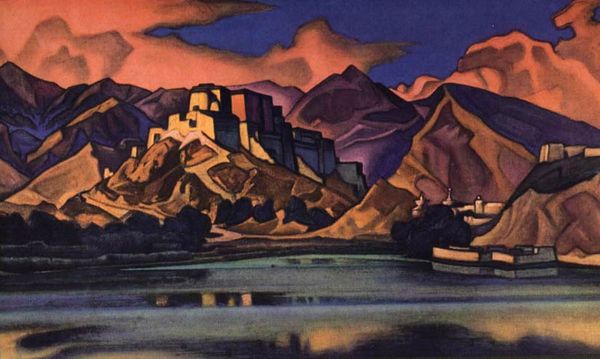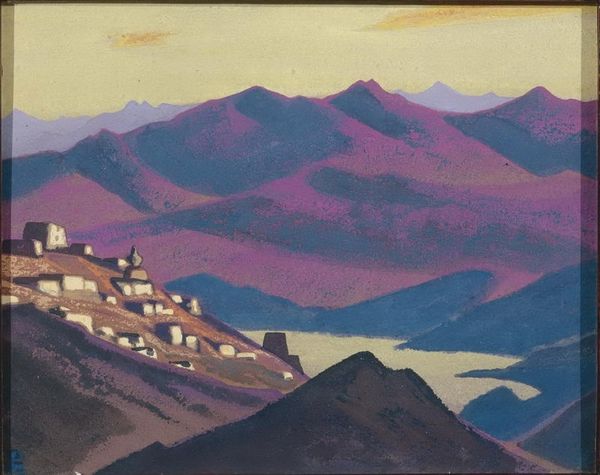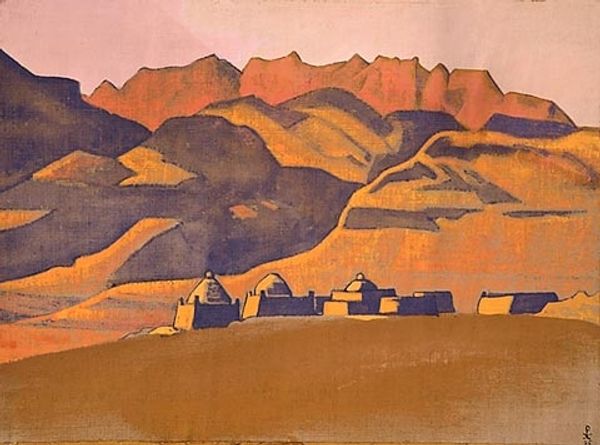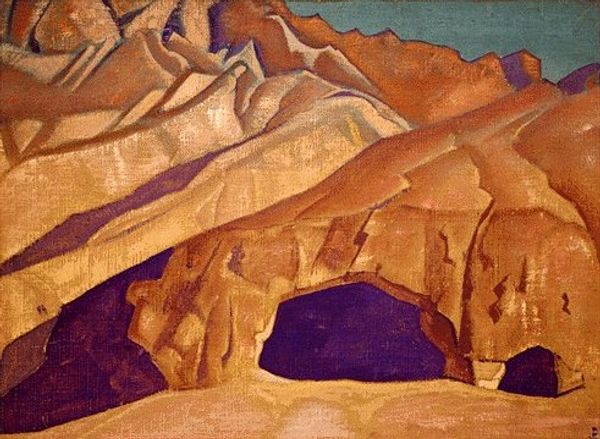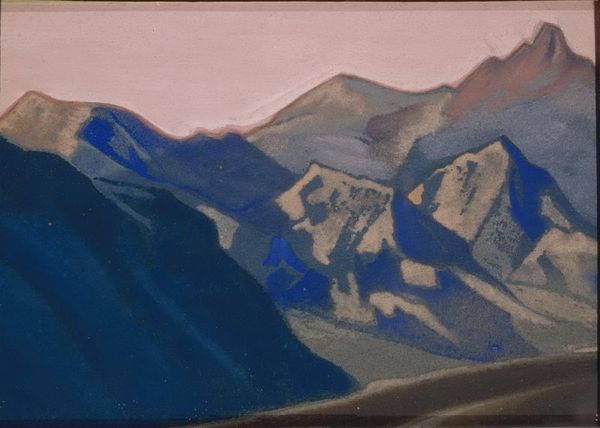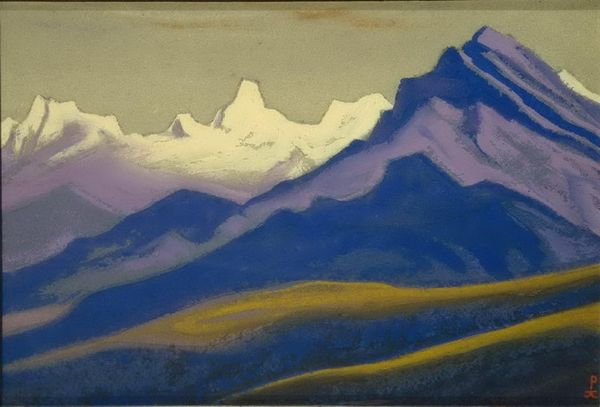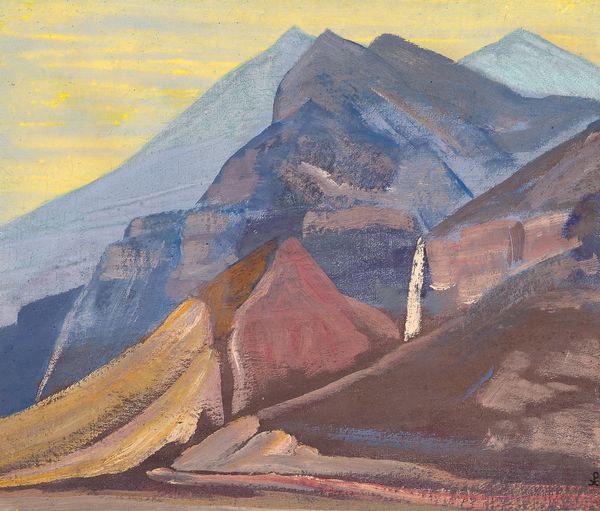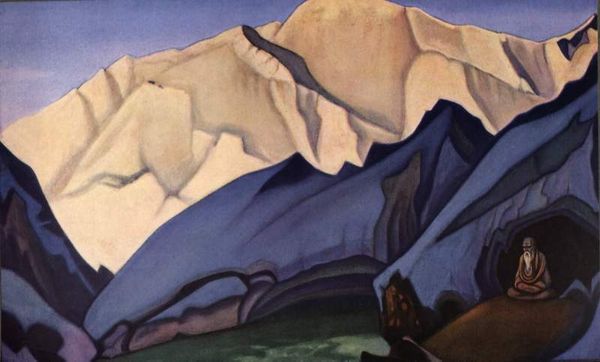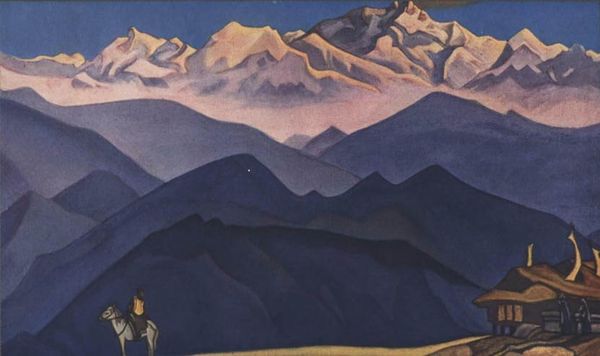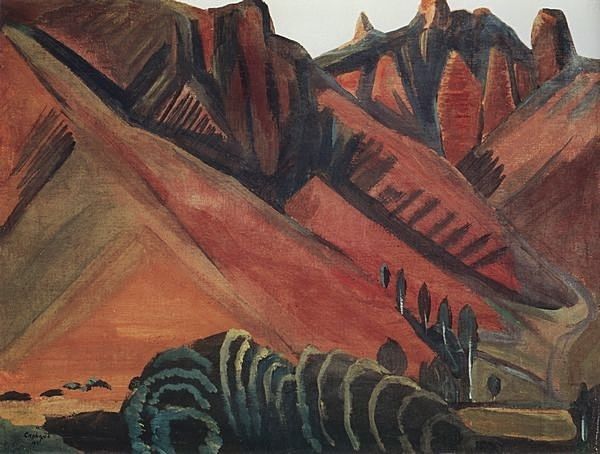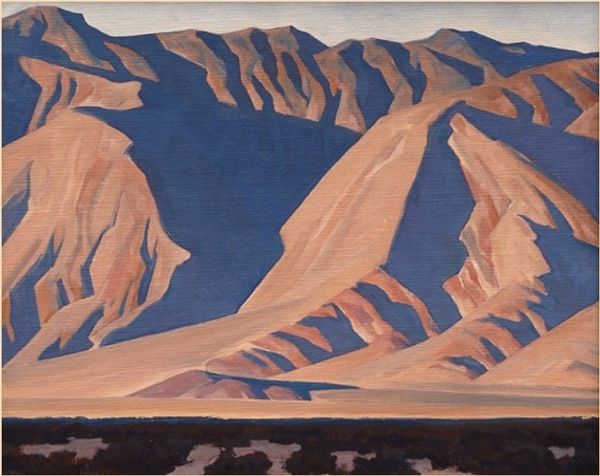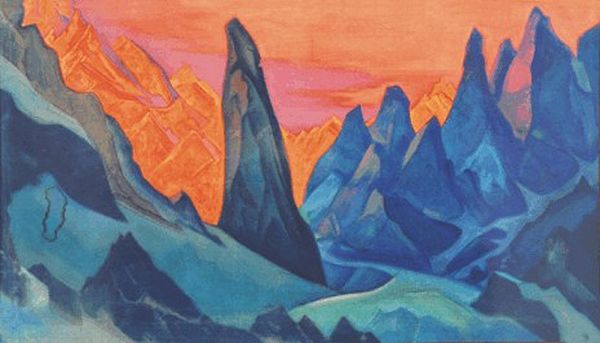
Copyright: Public domain US
Editor: Here we have Martiros Sarian's "Sunny Landscape" from 1923, rendered in oil paint. The colors are so vivid and simplified, almost childlike, but not quite naive. The mountain dominates the scene... What do you make of it? Curator: The heavy impasto and bold color choices are what grab my attention. Look at how Sarian builds the mountain out of layers of thick paint. Considering the time, 1923, what socioeconomic factors were impacting access to pigments and how might that play out in an artist's choices regarding paint application and composition? Editor: So, perhaps the directness is born out of necessity or availability? Rather than striving for photorealism, Sarian works with what he has... Curator: Precisely! This isn't just about aesthetic preference. Think about the cost of materials, the labor involved in sourcing and preparing pigments, especially during times of scarcity. How accessible were different colors, and what statements are being made with what IS emphasized through availability? Sarian transforms those limitations into his artistic expression. The materiality becomes the message. Editor: So, by focusing on the materials and the production, we get a richer understanding than just saying "oh, it's a colorful landscape." Curator: Exactly. Consider also where Sarian was working. Were these pigments locally sourced? How might the act of acquiring materials itself be embedded within the meaning of the landscape being represented? The labor and the location—it’s all intertwined. Editor: It makes you consider all the steps to create it beyond just inspiration. The art embodies social processes that otherwise seem distant from our encounter with a painting. Curator: Precisely!
Comments
No comments
Be the first to comment and join the conversation on the ultimate creative platform.
